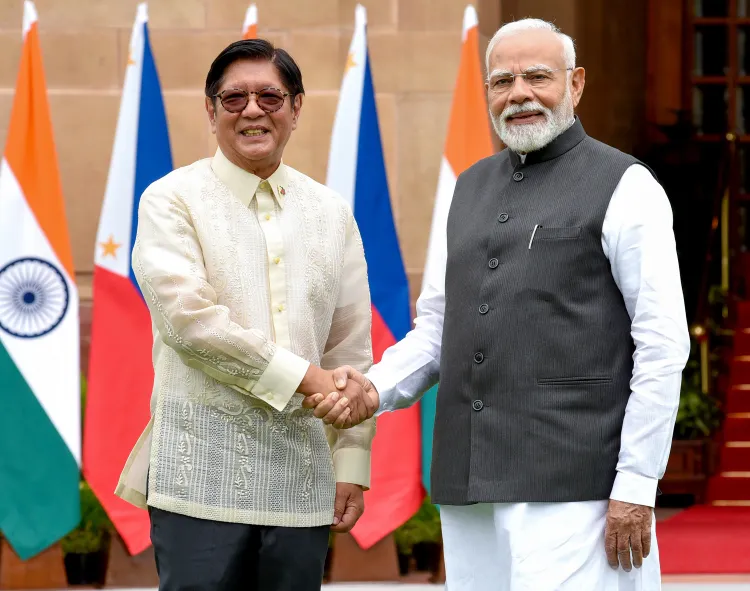Is the Defence and Security Partnership the Central Pillar of India-Philippines Strategic Alignment?

Synopsis
Key Takeaways
- Defence and security partnership as a central pillar of India-Philippines ties.
- Sale of BrahMos missiles enhances military collaboration.
- Joint naval exercises mark a significant step in cooperation.
- India's proactive approach in the Indo-Pacific is evolving.
- Philippines aims to strengthen multi-directional security ties.
New Delhi, Aug 11 (NationPress) The defence and security partnership has emerged as the fundamental element of the strategic alignment between India and the Philippines, further solidified during the recent visit of Philippine President Ferdinand R Marcos Jr. last week.
The robust defence ties are evident in the agreement for the sale of BrahMos supersonic cruise missile systems to the Philippines.
Marcos Jr expressed that both nations are committed to enhancing cooperation in defence and security, highlighting satisfaction with the swift pace of the Philippines's ongoing defence modernization and the growing capabilities of India's indigenous defence industry, particularly through the BrahMos initiative, as detailed in a report by 360info.
In a significant development, on the eve of President Marcos's visit to India, the navies of both countries engaged in their inaugural joint exercises in the South China Sea on August 3-4. These exercises occurred within the Philippine Exclusive Economic Zone, part of Manila's strategy to counter China's maritime assertiveness. For this exercise, India deployed three warships - INS Delhi, INS Shakti, and INS Kiltan, while the Philippines contributed BRP Miguel Malvar and BRP Jose Rizal. Reports suggest that Chinese vessels monitored the Indian-Philippine flotilla.
This shift reveals a strategic evolution in India's approach toward the Indo-Pacific. Previously, India had seldom referred to the South China Sea, with a few exceptions. However, India has now affirmed its commitment to the 2016 South China Sea arbitration award, emphasizing the importance of upholding a rules-based maritime order.
According to the 360info report, India no longer views the South China Sea issue as a peripheral matter; it is now integral to its maritime and economic security as well as its claims of regional leadership. The partnership with the Philippines showcases New Delhi's aspirations in the Indo-Pacific.
India's involvement in the South China Sea through naval exercises and the sale of BrahMos missiles to the Philippines signifies operational commitment beyond mere diplomatic alignment. This strategy aims to provide a viable counterbalance to China's claims in a region critical for global trade. The Philippines' pursuit of deeper ties with regional partners like India illustrates its desire to diversify security and economic collaborations, reducing reliance on a single ally.









